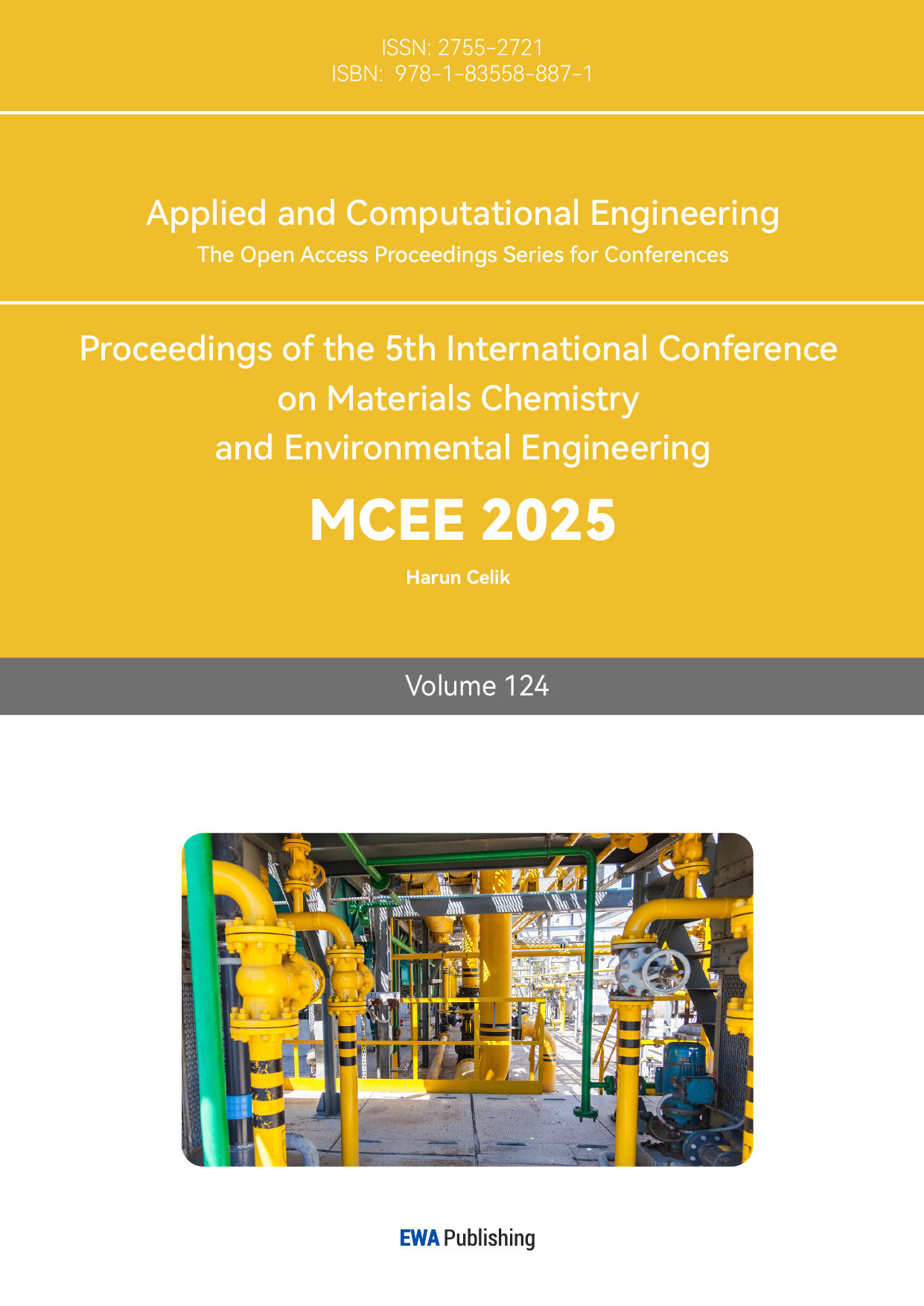1. Introduction
With the worsening of environmental issues and rising fuel prices, traditional fuel vehicles are no longer the preferred choice for many consumers. Electric vehicles (EVs) have become increasingly popular due to their eco-friendly nature and relatively lower overall operating costs. For instance, as of October 18th, 2024, in Jilin province, the price of gasoline-95 is 8.03 RMB per liter, according to China Petroleum & Chemical Corporation. Taking the Mercedes-Benz E-300L as an example, with a theoretical combined fuel consumption of 6.65 liters per 100 kilometers, the cost of driving 100 kilometers is approximately 53.40 RMB. In contrast, electric vehicles offer significantly reduced costs due to lower energy prices. For instance, 1 kilowatt-hour of electricity costs around 0.62 RMB. The Stelato 9, developed by the Harmony Intelligent Mobility Alliance and BAIC BJEV, has a theoretical energy consumption of 12.25 kilowatt-hours per 100 kilometers, amounting to just 7.60 RMB for the same distance. This drastic difference in operating costs makes EVs a more attractive option for consumers.
The environmental benefits also play a key role in this transition. EVs produce no direct emissions, contributing to cleaner air and reduced greenhouse gas emissions, aligning with global efforts to combat climate change. Research suggests that a shift towards a renewable-oriented electricity generation mix could lead to a reduction in GHG emissions by up to 5% by 2026 [1]. Consequently, EVs are becoming the primary choice for environmentally conscious consumers who are also looking to cut down on fuel expenses. In China, EV adoption has been particularly notable. By the end of 2023, electric vehicles accounted for 11.7% of annual vehicle sales, with a total stock of around 11.7 million vehicles [2]. Over 16.6 million EVs were on road in 2021, and expected 145 million by 2030 by International Energy Agency [3]. This trend is expected to continue as advancements in EV technology and infrastructure support the growing demand for cleaner and more cost-effective transportation solutions.
As the number of EV sales continues to grow, new challenges emerge, one of the most significant being how to make these vehicles as light as possible. Reducing the weight of EVs offers several benefits. Predictions from a study on mid-size electric vehicles show that a 100 kg weight reduction can improve energy efficiency by 3.5% [4]. This potential improvement can stimulate further research and innovation in EV design, which, in turn, could boost sales. Two primary methods for lightweighting EVs are material substitution and model optimization.
Composite materials have become one of the most popular options in vehicle design due to their combined advantages from various materials. Qiang Liu et al. stated that carbon twill weave fabric composites have already become a priority material due to their high strength, low density, and crashworthiness. Results showed that using this composite material reduced vehicle weight by up to 28%. Consequently, with a 28.8-kilowatt-hour battery, the driving range increased significantly to 230 km [5]. Massimo Delogu et al. mentioned that through Life Cycle Assessment (LCA), the use of innovative composite materials can result in mass reductions of 16% to 55%. This weight reduction could potentially extend vehicle lifespans to 150,000 km [6].
Model optimization is another effective way to achieve weight reduction. D. Jin et al. used topology and size optimization to simulate weight reduction in EVs, showing that weight could be reduced by up to 36%, with improved stiffness and crashworthiness [7]. Pooja Doke et al. introduced the concept of a CAE model aimed at reducing vehicle weight through simulation, while also enhancing overall performance [8]. Although significant progress has been made in the lightweighting of EVs, research in this area still presents controversies and debates. This paper reviews seven methods for reducing EV weight through material substitution and model optimization, highlighting current trends in lightweighting and discussing future challenges and expectations.
2. Structure Design and Optimization
2.1. Carbon twill weave fabric composite
Qiang Liu et al primarily focuses on developing a multiscale approach to forecast the three-dimensional elastic model of carbon twill weave fabric composite, which will be used in the crashworthiness analysis of new energy vehicle structures. The individual modules of the electric car are first disassembled and analyzed to assess the importance of the body structure. The microstructure of the T300 carbon twill weave fabric composite is observed to establish a unit cell model, which is then used to predict the material’s properties through the homogenization procedure. By conducting experiments involving stretching and bending, all parameters predicted by the approach investigated in this article are verified.
Furthermore, structural crashworthiness analysis, divided into roof crash analysis and side impact analysis, is performed to examine the effect of applying this new material to the vehicle body structure in terms of crashworthiness and weight reduction. The results indicate that the body structure made from the material predicted by this approach is 28% lighter than one made from glass fiber-reinforced plastics, and it also outperforms the latter in crashworthiness analysis. These findings suggest that the multiscale approach developed in this article is both practical and adaptable. Moreover, this approach can be applied to other vehicles with body structures made of composites [5].
2.2. Integrated Computational Materials Engineering (ICME)
W. Joost et al mainly discusses the relationship between vehicle weight reduction and U.S. energy efficiency, as well as the process in developing the lightweight materials. For every 10% reduction in vehicle weight, the fuel efficiency of passenger vehicles can be improved by 6% to 8%, and the range of electric vehicles can increase by 13.7%, highlighting the urgent need for lightweight materials. The author mentions several types of lightweight materials: aluminum alloys, advanced high-strength steels, advanced polymers, fiber-reinforced polymer composites, and magnesium alloys. All of these materials are suitable for lightweight design, but finding a single ideal solution for all vehicle functions and components is unlikely due to variations in performance, manufacturing processes, and vehicle costs.
A multi-material approach is necessary for achieving vehicle weight reduction. However, it is difficult to accurately predict the performance of a vehicle when built with different materials. As a result, the development of Integrated Computational Materials Engineering (ICME), a method that integrates materials information into computational tools for performance analysis and manufacturing simulation, becomes crucial. Once ICME is further developed, it could contribute to a more effective introduction of lightweight materials, more accurate performance predictions, and a less time-consuming development process. Finally, the author emphasizes that ICME is a supplement to conventional research technology. As ICME becomes more refined, it may allow lightweight vehicles to be investigated more efficiently and rapidly [9].
2.3. Aluminum
J. Hirsch primarily discusses the extensive application of aluminum in car design as a key to achieve lightweight structures and improve the energy efficiency. The author confirms that aluminum is a priority material for lightweight vehicle design. In Europe, the use of aluminum in car manufacturing has seen a significant increase, rising from 62 kg per vehicle in 1990 to 132 kg in 2005. Figure 1 below shows the portion of using aluminum in European cars.
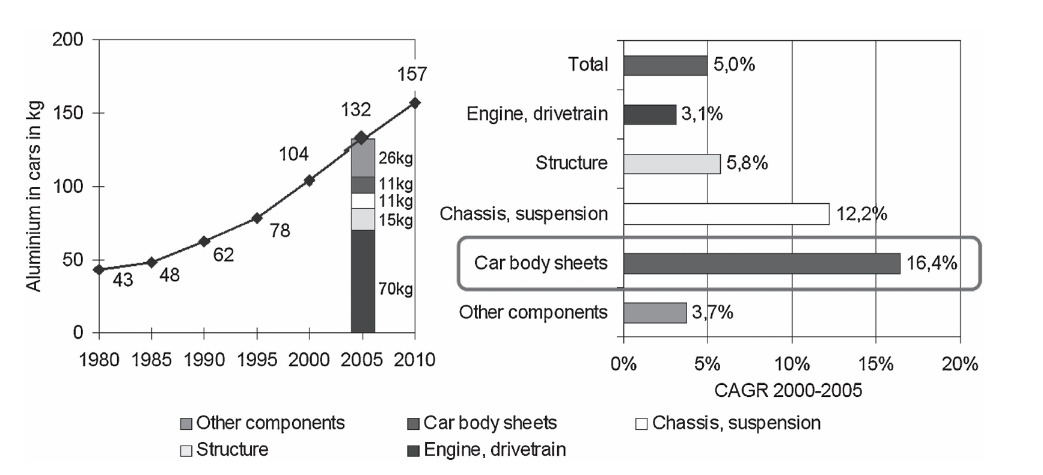
Figure 1: The portion in using aluminum in European cars [10]
Aluminum is widely used in various components, such as fuel systems, engine blocks, cradles, doors, and more. Two main types of aluminum alloys are utilized: non-heat-treatable AlMg alloys and heat-treatable AlMgSi alloys. Their properties, such as strength and formability, ensure they are key choices for automotive manufacturing. Aluminum is also used in chassis construction. Compared to traditional steel chassis, aluminum chassis offer a 40% weight reduction. In addition, aluminum improves ride comfort and driving dynamics. The impact of weight reduction due to aluminum use in the vehicle structure is notable. For example, in BMW's recent 5 Series, the aluminum-reinforced front-end structure (GRAV) achieved a 30% weight reduction compared to conventional steel, while still meeting requirements for stiffness and strength.
While aluminum plays a crucial role in lightweight design, it's not the only solution. Alongside aluminum, multi-material design is being developed to balance costs, safety, and performance. Today, European vehicles contain approximately 132 kg of aluminum components, and this figure is expected to continue increasing as manufacturers pursue further weight reduction while meeting key requirements such as safety [10].
2.4. Topology optimization and size optimization
D. Jin et al primarily discusses the conceptual design of the body structure of a mini electric car through topology and size optimization. A design process based on CAE (Computer-Aided Engineering) analysis is necessary, which should simultaneously consider the key performance indicators: crashworthiness, lightweight, and structural performance. The conceptual design process consists of two phases: identifying load paths through load cases and modeling a simplified structure based on those load paths. Topology optimization is employed in the first phase, while size optimization is used to refine profile parameters for optimal results.
The design process takes into account four critical factors: static stiffness, crashworthiness, modal performance, and lightweight design. OptiStruct, using the Solid Isotropic Material with Penalization (SIMP) interpolation method, is used for topology optimization by setting up a mathematical model, defining the design space, and optimizing parameters to maximize stiffness, which translates to minimizing flexibility. The subsequent size optimization is conducted based on the results of topology optimization, with the primary goal of minimizing weight. Figure 2 shows the result of the topology optimization.
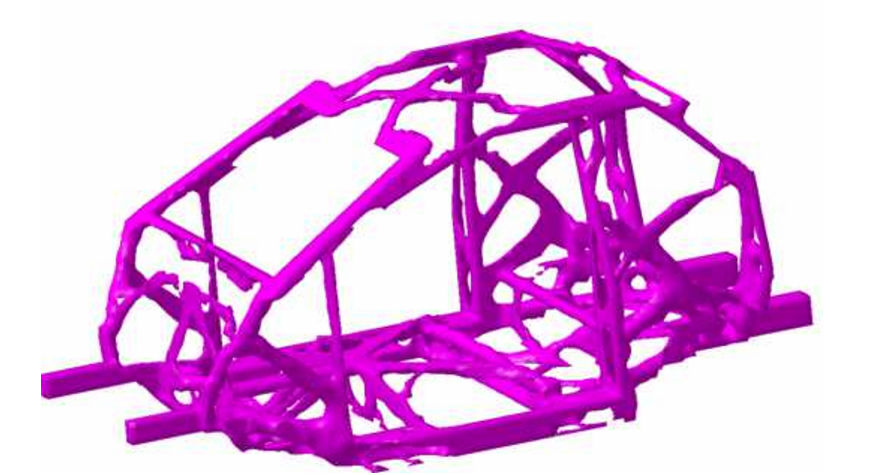
Figure 2: The topology result [7]
The final result, after both optimizations, satisfies all design requirements and shows a significant reduction in total weight by 36%. Additionally, both torsional stiffness and stiffness under crashworthiness conditions are improved to varying degrees. This result provides a solid foundation for the detailed design of the electric vehicle's body frame [7].
2.5. The concept CAE model
Pooja Doke et al primarily discuss a modeling method aimed at reducing vehicle structure weight: the concept CAE model. The detailed CAE model is typically used later in the design process, where only minor changes are feasible. Therefore, the concept CAE model, a time-saving and relatively simple approach introduced at the beginning of the design phase, plays an important role in car structure design. In the experiment, the author used the LMS measurement system to analyze global frequency modes in comparison with modal structure analysis. In the frequency range of 0-200Hz, the Body in White (BIW) was tested to help analyze global vibration frequency modes.
The experiment also involved calibrating the input and output signals from 133 node points on the vehicle body. Standard accelerometers were used to capture signal inputs from three directions of body vibration. HYPERWORKS and NASTRAN were employed as analysis tools in this experiment. A comparison was made between the structural dynamic analysis results from the model and the modal test results, and the Modal Assurance Criteria (MAC) and natural frequency differences between the concept and advanced models were calculated to verify the noise, vibration, and harshness (NVH) concept model. The results demonstrated good consistency between the testing and modeling data, indicating that this concept model can be effectively used for vehicle weight reduction and the optimization of overall performance [8].
2.6. series aluminum alloy
M. Imal et al primarily discusses the advantages and applications of 6063 series aluminum alloy in manufacturing electric vehicles, focusing on its lightweight properties and strength. Due to rising fuel prices and environmental pollution concerns, electric vehicle sales have recently increased. Given the weight and number of batteries in a single vehicle, reducing overall weight has become one of the key methods to enhance range and safety. The 6063 series aluminum alloy, which is approximately 34% lighter than standard steel while still providing sufficient strength, is one of the best material choices for building an electric car chassis. A birdcage chassis design is identified as a suitable option to meet these requirements.
To implement the birdcage chassis design, the researchers began with computer modelling. First, SolidWorks is used to create a 3D solid model of the chassis. The model incorporates 30x30 mm box sections with 3 mm wall thickness and 20 mm diameter tubes with 2 mm wall thickness, all made of aluminum. The 6063-T6 material, in 6-meter lengths, is cut to appropriate sizes and joined with the 30x30 mm box sections using MIG welding. The chassis is illustrated in Figure 3.
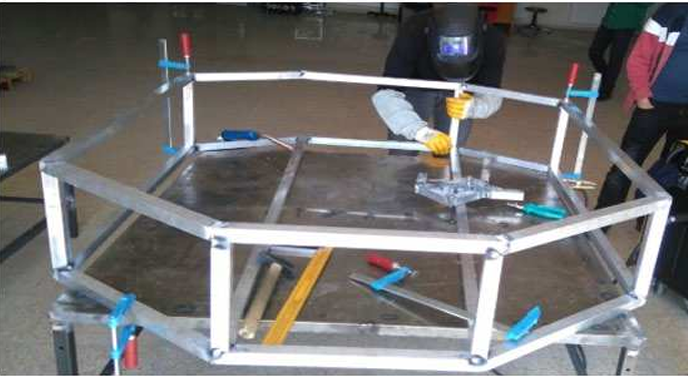
Figure 3: The production of chassis [11]
The results indicate that using aluminum for the chassis reduces total weight by 49% compared to the original design, which represents an impressive 82% weight reduction when compared to a traditional steel chassis. Furthermore, this weight reduction makes the vehicle more environmentally friendly, as lower energy consumption leads to higher performance and an extended range [11].
2.7. Weight optimization of leaf spring
S. Shohel et primarily focuses on the design of the leaf spring in electric vehicles, specifically addressing fiber orientation, lamina thickness of composite materials, and stacking sequence. The author first outlines the design specifications of the leaf spring, noting that the rear eye of the leaf spring needs to be connected through a shackle, while the front eye is connected to the car chassis via a joint with a fixed support. The composite leaf spring is created by using a layer-by-layer approach with materials including carbon fiber, glass fiber, and resin epoxy. In this setup, resin epoxy serves as the matrix, while carbon fiber and glass fiber act as reinforcements. The thickness of the carbon fiber and glass fiber layers is 1mm, while the resin epoxy layer is 0.5mm. For comparison, the article also discusses the use of structural steel as the conventional material for leaf springs.
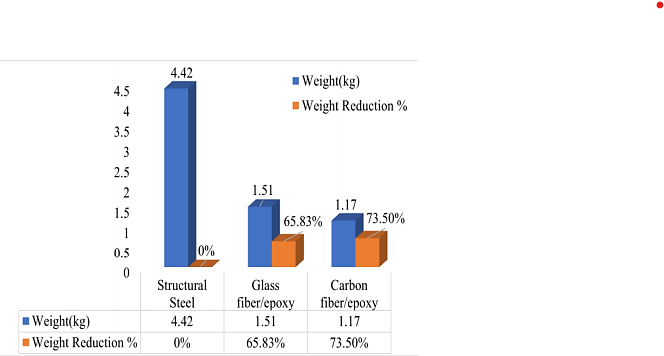
Figure 4: The reduction in weight [12]
The results show significant weight reductions with composite materials. The carbon fiber/epoxy composite reduces weight by 73.5%, while the glass fiber/epoxy composite achieves a 65.83% weight reduction. Both materials maintain the necessary strength and load-bearing capacity. Figure 4 highlights this significant weight reduction. Additionally, static analysis reveals that the composite leaf spring demonstrates superior energy storage capacity compared to its structural steel counterpart. This enhanced energy storage capability translates to improved performance in the vehicle's suspension system, ultimately resulting in better ride quality and comfort for passengers [12].
3. Conclusion
This paper primarily focuses on reviewing seven key methods for lightweighting in car structure design and optimization. These methods reflect two main approaches that dominate current research: materials and software. Of the seven methods, four are focused on materials, including carbon twill weave fabric composite, aluminum, 6063 series aluminum alloy, and composite materials such as carbon fiber/epoxy and glass fiber/epoxy composites. These materials are explored for their high strength-to-weight ratios, crucial for reducing vehicle mass while maintaining structural integrity. The other three methods focus on software-based approaches, which include Integrated Computational Materials Engineering, topology optimization and size optimization using OptiStruct, and the concept CAE model. These software tools and methods are employed to simulate, design, and optimize vehicle structures, enhancing both efficiency and precision in the lightweighting process. The integration of materials and software approaches has become central to vehicle lightweighting research. This focus is likely due to their direct relation to the manufacturing process and their potential for significant, tangible improvements during development and testing phases.
Lightweighting has emerged as a crucial area of focus for electric vehicles (EVs), as it directly impacts critical factors such as vehicle range, production costs, and energy efficiency. This makes lightweighting not just an engineering challenge but also a key factor in the future sustainability and affordability of EVs. This paper aims to fill a gap in the existing literature by providing a comprehensive overview of seven key methods in vehicle lightweighting, encompassing both material and software-based approaches. It can serve as a useful reference for researchers looking to research deeper into related topics, especially those focused on material innovations and software-based weight reduction techniques. While this review provides valuable insights into several key lightweighting methods, it's important to acknowledge that the field is vast and rapidly evolving, with many additional studies and approaches yet to be explored. There are many other ideas and approaches that could further optimize vehicle weight reduction, and their inclusion could lead to even more significant advancements in this field. Future iterations of this paper will incorporate a wider array of references and methods, offering a more comprehensive overview of the vehicle lightweighting landscape. This will not only offer a more complete picture but also inspire further research and innovation in lightweighting strategies for the automotive industry.
References
[1]. Choi, H., Shin, J., & Woo, J. R. (2018). Effect of electricity generation mix on battery electric vehicle adoption and its environmental impact. Energy Policy, 121, 13-24. https://doi.org/10.1016/j.enpol.2018.06.013
[2]. Delogu, M., Zanchi, L., Dattilo, C. A., Pierini, M., & Gori, S. (2017). Innovative composites and hybrid materials for electric vehicles lightweight design in a sustainability perspective. Materials Today Communications, 13, 192-209. https://doi.org/10.1016/j.mtcomm.2017.09.012
[3]. Doke, P., Fard, M., & Jazar, R. (2012). Vehicle concept modeling: A new technology for structures weight reduction. Procedia Engineering, 49, 287-293. https://doi.org/10.1016/j.proeng.2012.10.139
[4]. Hirsch, J. (2011). Aluminium in innovative light-weight car design. Materials Transactions, 52(5), 818-824. https://doi.org/10.2320/matertrans.L-MZ201132
[5]. Imal, M., & Ermurat, M. (2022). Design of lightweight electric vehicle and application for efficiency challenge marathon competition. International Journal of Engineering Science and Technology, 6(6), 19-27.
[6]. Jin, D. F., & Chen, X. Q. (2014). A lightweight body frame conceptual design of a mini electric vehicle. Advanced Materials Research, 952, 223-226. https://doi.org/10.4028/www.scientific.net/AMR.952.223
[7]. Joost, W. J. (2012). Reducing vehicle weight and improving US energy efficiency using integrated computational materials engineering. JOM, 64, 1032-1038. https://doi.org/10.1007/s11837-012-0424-z
[8]. Jung, H., Silva, R., & Han, M. (2018). Scaling trends of electric vehicle performance: Driving range, fuel economy, peak power output, and temperature effect. World Electric Vehicle Journal, 9(4), 46. https://doi.org/10.3390/wevj9040046
[9]. Liu, Q., Lin, Y., Zong, Z., Sun, G., & Li, Q. (2013). Lightweight design of carbon twill weave fabric composite body structure for electric vehicle. Composite Structures, 97, 231-238. https://doi.org/10.1016/j.compstruct.2012.09.052
[10]. Ou, S., Yu, R., Lin, Z., Ren, H., He, X., Przesmitzki, S., & Bouchard, J. (2021). Evaluating China's passenger vehicle market under the vehicle policies of 2021–2023. World Electric Vehicle Journal, 12(2), 72. https://doi.org/10.3390/wevj12020072
[11]. Shohel, S. M., Gupta, S. S., & Riyad, S. H. (2022). Weight optimization and finite element analysis of automobile leaf spring: A design construction referred to electric vehicle. In IOP Conference Series: Materials Science and Engineering (Vol. 1259, No. 1, p. 012024). IOP Publishing.
[12]. Zhou, X., Jiang, J., Hu, Z., Gao, W., & Wang, C. (2022). Lightweight materials in electric vehicles. International Journal of Automotive Manufacturing and Materials, 3(3), 3-3.
Cite this article
Kong,W. (2025). Researches on Lightweight Body Structure Design and Optimization of Electric Vehicles. Applied and Computational Engineering,124,183-189.
Data availability
The datasets used and/or analyzed during the current study will be available from the authors upon reasonable request.
Disclaimer/Publisher's Note
The statements, opinions and data contained in all publications are solely those of the individual author(s) and contributor(s) and not of EWA Publishing and/or the editor(s). EWA Publishing and/or the editor(s) disclaim responsibility for any injury to people or property resulting from any ideas, methods, instructions or products referred to in the content.
About volume
Volume title: Proceedings of the 5th International Conference on Materials Chemistry and Environmental Engineering
© 2024 by the author(s). Licensee EWA Publishing, Oxford, UK. This article is an open access article distributed under the terms and
conditions of the Creative Commons Attribution (CC BY) license. Authors who
publish this series agree to the following terms:
1. Authors retain copyright and grant the series right of first publication with the work simultaneously licensed under a Creative Commons
Attribution License that allows others to share the work with an acknowledgment of the work's authorship and initial publication in this
series.
2. Authors are able to enter into separate, additional contractual arrangements for the non-exclusive distribution of the series's published
version of the work (e.g., post it to an institutional repository or publish it in a book), with an acknowledgment of its initial
publication in this series.
3. Authors are permitted and encouraged to post their work online (e.g., in institutional repositories or on their website) prior to and
during the submission process, as it can lead to productive exchanges, as well as earlier and greater citation of published work (See
Open access policy for details).
References
[1]. Choi, H., Shin, J., & Woo, J. R. (2018). Effect of electricity generation mix on battery electric vehicle adoption and its environmental impact. Energy Policy, 121, 13-24. https://doi.org/10.1016/j.enpol.2018.06.013
[2]. Delogu, M., Zanchi, L., Dattilo, C. A., Pierini, M., & Gori, S. (2017). Innovative composites and hybrid materials for electric vehicles lightweight design in a sustainability perspective. Materials Today Communications, 13, 192-209. https://doi.org/10.1016/j.mtcomm.2017.09.012
[3]. Doke, P., Fard, M., & Jazar, R. (2012). Vehicle concept modeling: A new technology for structures weight reduction. Procedia Engineering, 49, 287-293. https://doi.org/10.1016/j.proeng.2012.10.139
[4]. Hirsch, J. (2011). Aluminium in innovative light-weight car design. Materials Transactions, 52(5), 818-824. https://doi.org/10.2320/matertrans.L-MZ201132
[5]. Imal, M., & Ermurat, M. (2022). Design of lightweight electric vehicle and application for efficiency challenge marathon competition. International Journal of Engineering Science and Technology, 6(6), 19-27.
[6]. Jin, D. F., & Chen, X. Q. (2014). A lightweight body frame conceptual design of a mini electric vehicle. Advanced Materials Research, 952, 223-226. https://doi.org/10.4028/www.scientific.net/AMR.952.223
[7]. Joost, W. J. (2012). Reducing vehicle weight and improving US energy efficiency using integrated computational materials engineering. JOM, 64, 1032-1038. https://doi.org/10.1007/s11837-012-0424-z
[8]. Jung, H., Silva, R., & Han, M. (2018). Scaling trends of electric vehicle performance: Driving range, fuel economy, peak power output, and temperature effect. World Electric Vehicle Journal, 9(4), 46. https://doi.org/10.3390/wevj9040046
[9]. Liu, Q., Lin, Y., Zong, Z., Sun, G., & Li, Q. (2013). Lightweight design of carbon twill weave fabric composite body structure for electric vehicle. Composite Structures, 97, 231-238. https://doi.org/10.1016/j.compstruct.2012.09.052
[10]. Ou, S., Yu, R., Lin, Z., Ren, H., He, X., Przesmitzki, S., & Bouchard, J. (2021). Evaluating China's passenger vehicle market under the vehicle policies of 2021–2023. World Electric Vehicle Journal, 12(2), 72. https://doi.org/10.3390/wevj12020072
[11]. Shohel, S. M., Gupta, S. S., & Riyad, S. H. (2022). Weight optimization and finite element analysis of automobile leaf spring: A design construction referred to electric vehicle. In IOP Conference Series: Materials Science and Engineering (Vol. 1259, No. 1, p. 012024). IOP Publishing.
[12]. Zhou, X., Jiang, J., Hu, Z., Gao, W., & Wang, C. (2022). Lightweight materials in electric vehicles. International Journal of Automotive Manufacturing and Materials, 3(3), 3-3.





